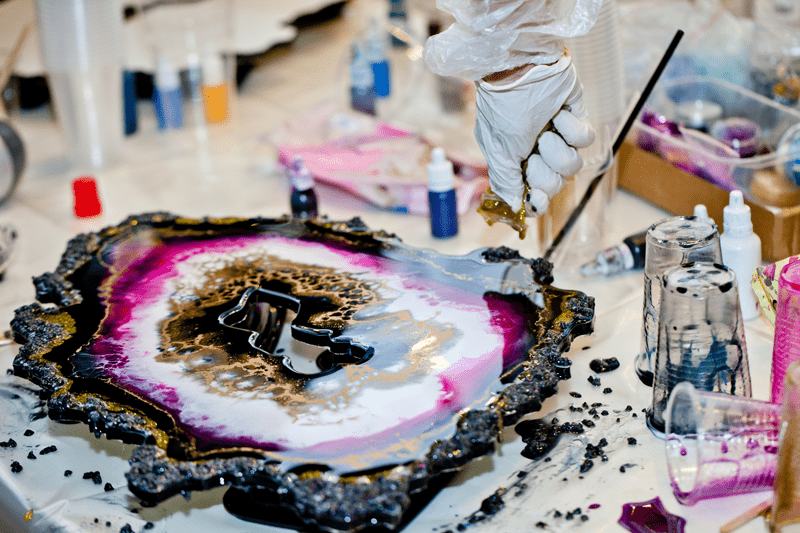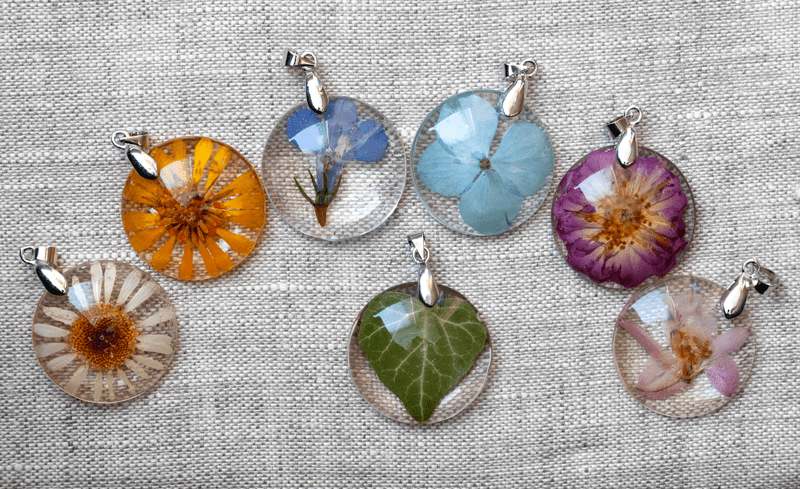Epoxy resin has gradually gained prominence in the world of arts and crafts. From classy jewelry to ethereal home furniture down to stunning paintings and ornaments, epoxy resin has indeed found its footing in the creative world. Using epoxy resin to create your own art and décor pieces is a good idea. However, it might look hard and technical from afar; indeed- it is, but with the right tips, it’ll be easier for you to create timeless pieces.

Here’s how to use epoxy resin to create exquisite art and décor pieces:
What Is Epoxy Resin?
Epoxy resin is a chemical substance that’s a combination of resin and hardener. When the resin and the hardener are mixed, a chemical reaction occurs, giving birth to what’s known as epoxy resin. Epoxy transparent resin is that clear and glossy hardening material that you might’ve seen countless times without taking specific note of.
The chemical has become quite popular for different purposes, but it’s mostly favored by artisans, particularly in the building and plumbing industry. And of course, arts and crafts enthusiasts have a deep connection with it.

Epoxy resin is a powerful substance that you can wield to create amazing works of art that showcase emotion, depth, and brilliance. As far as you can imagine and experiment, epoxy resin can help you realize your creativity and imagination. It allows you to mix diverse color pigments/additive, castings, and other materials/substances to create varying designs and effects. You can find out more about epoxy resin on resin-expert.com.
Resin Art Supplies
Epoxy Resin is rarely ever used alone in the art world. You can mix colors with it. You can also use it with dried leaves, dead insects, glitter, decor stones, crystals, beads, corals, and the likes to make unique creations. It may also be poured into different objects to form diverse shapes.
Here are some of the general supplies you might need alongside your epoxy resin for your creation. And of course, depending on what project you’re working on, you’d need some tools or items not included here. You can also check out this comprehensive fluid-painting.com guide for epoxy and wood to help you create phenomenal epoxy resin-designed furniture.
- Epoxy Resin Pigment: If you want to add some colors to your creations, you’d need to have epoxy resin pigment or unique paint on hand.
- Mixing Bowl or Cup: You’ll need to have containers to mix your epoxy resin and other craft materials. You should have at least two separate bowls to mix and gauge your mixture. If you have disposable containers, use them. In fact, they’re considered the best option for most projects because previous mixtures won’t be able to taint your new mixture (so, your new creation would be free from the residue that comes from your past creation).
- Wood Sticks: You’d need wooden sticks to stir your epoxy resin mixture to achieve the perfect design you desire.
- Protection Gloves: Since you’ll be dealing with chemicals, it’s only right that you protect your hands while creating your craft. You should buy a few pairs of latex gloves to keep your hands safe.
Which Surfaces Are Suitable For Epoxy Resin Art?
Several of the surfaces you know are suitable for resin art creation. These surfaces include wood, glass, metal, concrete, plexiglass, and unabsorbent hard paper. So, furniture, wooden floors, tiles, walls, ceramics, and other related materials are just some of the creations you can try making with epoxy resin.
Absorbent or porous materials are unsuitable for epoxy resin art because the epoxy resin will go through them instead of remaining on the surface. For this reason, clothes, normal paper, and the likes aren’t suitable except in rare cases where they can be used in multiple layers.
Calculating The Amount Of Epoxy Resin You Need
The amount of epoxy resin you need for art depends on the kind of art you create (i.e., how big it is and how complicated). The amount you need isn’t set in stone, so you’d need a measuring cup or spoon to help you gauge your measurement. You’ll find some epoxy resin calculators online to help you out with this.
You only have to input the details required, and you’d be presented with the accurate quantity you should use. A guide book can also appropriately explain how you can calculate your measurement to ensure a perfect craft creation, especially if you’re creating pieces that you’ll use for your home’s interiors.
Epoxy Resin Art Drying Time
The drying time of your epoxy resin art depends on the room temperature of the room where the art is left to dry. It’s also influenced by the type of resin used and the type of surface of the art. Some could try up within two hours, while some might take two to five days to get dry.
You should consider the type of epoxy resin art composition you’re going for before you start. This is because what you’re creating might be one to dry up within a limited time. If you aren’t aware of this, the art creation can flop.
Safety Measures When Working With Resin
Resin is a glossy substance that hardens completely at room temperature within a given period. So, you should handle it with care, especially when it’s close to your furniture, clothes, or other important items. If not, you’d be left with a permanent stain on them. Likewise, you should protect yourself while handling epoxy resin.
Although resin is certified harmless and non-toxic, it can cause skin irritation. Also, it can be quite hard to get off the skin once it hardens. So, you should wear clothing that’d cover your skin (hand gloves included). Try not to wear clothes with super long sleeves though as they’d keep getting dipped in your epoxy resin mixture while you’re working. Your type of epoxy resin might also be flammable, so you should exercise caution while using it to avoid a fire.
Conclusion
There’s much to learn about using epoxy resin to create art because it’s a wide spectrum, but as you continue creating and learning, you’ll get the hang of it. In no time, you’ll be creating astonishing epoxy resin art. Just remember that using epoxy resin for art is a sticky business, so you should be ready for that. As long as you take precautionary measures, creating your own resin art can be absolutely satisfying.

